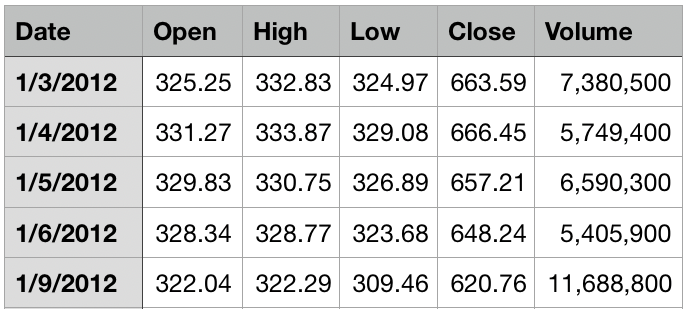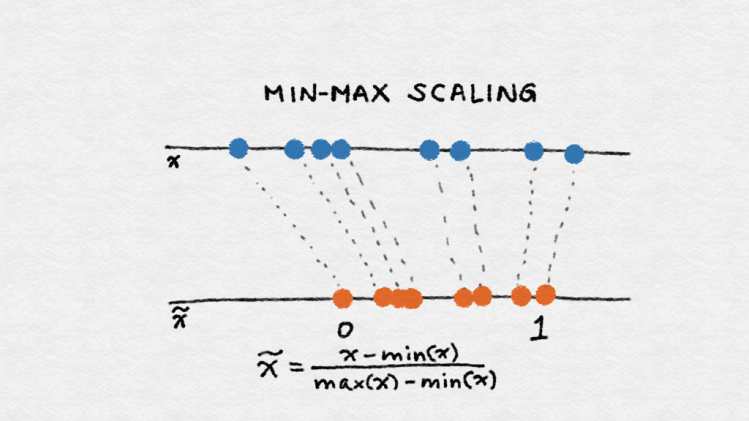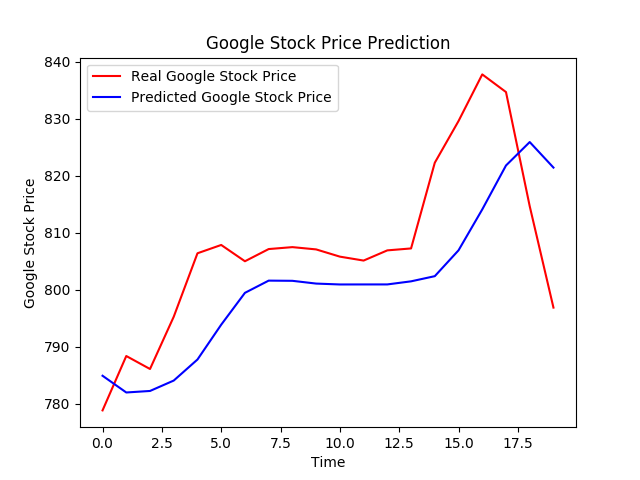|
|
|
模型任務 預測股票趨勢(上漲/下跌)
資料集- 訓練集:2012 年 ~ 2016 年的 Google stock price(共 1258 天)
- 測試集:2017 年 1 月的 Google stock price(共 20 天)
- 資料長相:
Keras LSTM python

執行環境版本Keras 2.1.5
Python 3.6.4 Step 1: 資料前處理- # Import the libraries
- import numpy as np
- import matplotlib.pyplot as plt # for 畫圖用
- import pandas as pd
- # Import the training set
- dataset_train = pd.read_csv('Google_Stock_Price_Train.csv') # 讀取訓練集
- training_set = dataset_train.iloc[:, 1:2].values # 取「Open」欄位值
- 做 Normalization,將資料壓縮在 [0,1] 之間:
Keras LSTM python

圖片來源:《Feature Engineering for Machine Learning》一書
- # Feature Scaling
- from sklearn.preprocessing import MinMaxScaler
- sc = MinMaxScaler(feature_range = (0, 1))
- training_set_scaled = sc.fit_transform(training_set)
- 準備進入訓練的資料格式:設定 Timestep
Timesteps 設為 60 ,代表過去 60 天的資訊,嘗試過數值設置太少,將使 RNN 無法學習。
- X_train = [] #預測點的前 60 天的資料
- y_train = [] #預測點
- for i in range(60, 1258): # 1258 是訓練集總數
- X_train.append(training_set_scaled[i-60:i, 0])
- y_train.append(training_set_scaled[i, 0])
- X_train, y_train = np.array(X_train), np.array(y_train) # 轉成numpy array的格式,以利輸入 RNN
- Reshape
因為現在 X_train 是 2-dimension,將它 reshape 成 3-dimension: [stock prices, timesteps, indicators] - X_train = np.reshape(X_train, (X_train.shape[0], X_train.shape[1], 1))
Step 2: 搭建一個 LSTM 魔法陣- # Import the Keras libraries and packages
- from keras.models import Sequential
- from keras.layers import Dense
- from keras.layers import LSTM
- from keras.layers import Dropout
- # Initialising the RNN
- regressor = Sequential()
- 搭建 LSTM layer:
- units: 神經元的數目
- 第一層的 LSTM Layer 記得要設定input_shape參數
- 搭配使用dropout,這裡設為 0.2
- 由於這邊的第四層 LSTM Layer 即將跟 Ouput Layer 做連接,因此注意這邊的 return_sequences 設為預設值 False (也就是不用寫上 return_sequences)
- # Adding the first LSTM layer and some Dropout regularisation
- regressor.add(LSTM(units = 50, return_sequences = True, input_shape = (X_train.shape[1], 1)))
- regressor.add(Dropout(0.2))
- # Adding a second LSTM layer and some Dropout regularisation
- regressor.add(LSTM(units = 50, return_sequences = True))
- regressor.add(Dropout(0.2))
- # Adding a third LSTM layer and some Dropout regularisation
- regressor.add(LSTM(units = 50, return_sequences = True))
- regressor.add(Dropout(0.2))
- # Adding a fourth LSTM layer and some Dropout regularisation
- regressor.add(LSTM(units = 50))
- regressor.add(Dropout(0.2))
- # Adding the output layer
- regressor.add(Dense(units = 1))
- Compiling & Fitting LSTM model
- optimizer: 選擇 Adam
- loss: 使用 MSE
- # Compiling
- regressor.compile(optimizer = 'adam', loss = 'mean_squared_error')
- # 進行訓練
- regressor.fit(X_train, y_train, epochs = 100, batch_size = 32)
Keras LSTM python

Step 3: 進行預測- dataset_test = pd.read_csv('Google_Stock_Price_Test.csv')
- real_stock_price = dataset_test.iloc[:, 1:2].values
- dataset_total = pd.concat((dataset_train['Open'], dataset_test['Open']), axis = 0)
- inputs = dataset_total[len(dataset_total) - len(dataset_test) - 60:].values
- inputs = inputs.reshape(-1,1)
- inputs = sc.transform(inputs) # Feature Scaling
- X_test = []
- for i in range(60, 80): # timesteps一樣60; 80 = 先前的60天資料+2017年的20天資料
- X_test.append(inputs[i-60:i, 0])
- X_test = np.array(X_test)
- X_test = np.reshape(X_test, (X_test.shape[0], X_test.shape[1], 1)) # Reshape 成 3-dimension
- predicted_stock_price = regressor.predict(X_test)
- predicted_stock_price = sc.inverse_transform(predicted_stock_price) # to get the original scale
- # Visualising the results
- plt.plot(real_stock_price, color = 'red', label = 'Real Google Stock Price') # 紅線表示真實股價
- plt.plot(predicted_stock_price, color = 'blue', label = 'Predicted Google Stock Price') # 藍線表示預測股價
- plt.title('Google Stock Price Prediction')
- plt.xlabel('Time')
- plt.ylabel('Google Stock Price')
- plt.legend()
- plt.show()
Keras LSTM python

本次模型的任務是預測股票趨勢,由視覺化結果可以看出模型的預測表現,如預測的趨勢雖大致上跟真實股價是一致但預測的較為平滑。
文章出處
|
|